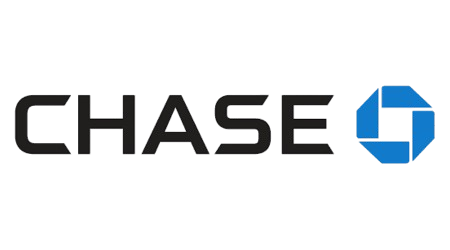Chase High School Checking Review

Chase High School Checking isn't available on Finder right now.
- Fee
- $0 per month
- Minimum deposit to open
- $0
Our verdict
An account designed for teenagers — with parental supervision.
The Chase High School Checking account is best for students ages 13 to 17 whose parents are existing Chase customers. It has no monthly fees or opening deposit requirements and provides multiple methods for depositing and withdrawing funds. Both the teen and their parent or guardian must visit a Chase branch together to open the account, which is a bit of a pain, especially since many other options offer online signups. Additionally, the parent or guardian acting as the co-owner must have a qualifying Chase checking account linked to the High School Checking account.
Best for: Students aged 13 to 17 whose parents have a Chase checking account.
Pros
-
Designed for ages 13 to 17 years old
-
$0 monthly and no overdraft fees
-
Auto-save deposits with Chase savings
-
Automatically converts to adult account at 19
Cons
-
Must open in a branch
-
Parent or guardian must have an eligible Chase account
What we like about Chase High School Checking
The High School Checking account can be a great introduction to real checking with a traditional bank. And, of course, Chase is FDIC insured, so its deposit accounts are protected up to $250,000.
Chase is also the largest bank in the US by assets, serves over 80 million customers and has one of the biggest physical presences in the states, with over 4,700 branches. Having so many branches is especially important, considering you must open the High School Checking account at a physical branch.
No monthly fees
Since most teenagers don’t have a steady income, we’re glad to see this account has no monthly fees. The maintenance fees don’t fall on the parent, either. Most kids’ debit cards, such as Greenlight or Acorns Early, charge a monthly fee.
Converts into an adult account
Once the teen turns 19, the Chase High School Checking account automatically converts to a Chase Total Checking account.
The Chase Total Checking account has a $12 monthly fee, but you can waive it by meeting balance requirements or receiving at least $500 in direct deposits each month.
Management in the Chase app
The parent or guardian who is the co-owner of the account can monitor the teen’s account in the Chase app. Parents can also set up account alerts, and teens can add the debit card to their mobile wallet.
Unlike a lot of kids’ debit cards, the Chase High School Checking account accepts direct deposit and mobile check deposit. Chase is also integrated with Zelle, so teens can send or receive money through the popular peer-to-peer payment service.
Link with Chase Savings
Just like with other Chase checking accounts, you can link the Chase High School Checking with the Chase Savings account for auto-saving. Additionally, account holders under the age of 18 don’t have to pay the Chase Savings monthly fee.
Where it falls short
If you don’t live near a Chase branch, you may need to travel to open this account.
Alternatively, there’s also the Chase First Banking account to consider. That account is available to children ages 6 to 17, and you can open it online. But just like the high school account, Chase First Banking requires a parent or guardian to have an eligible Chase checking account.
The Chase High School Checking is also more designed for teenagers aged 13 to 17. If your kiddo is under 13, you’ll have to check out the Chase First Banking account or other options.
Chase High School Checking’s fees and access
| Type of fee | Fee details |
|---|---|
Monthly service | $0 |
Opening deposit | $0 |
ATMs |
|
Debit card fees |
|
Overdraft or nonsufficient funds | $0, declines transactions that would overdraft |
Wire transfers |
Incoming wires are $0 if wire was sent with help of a Chase banker or using Chase.com or Chase Mobile |
Other fees | Money order: $5 per check |
Compare Chase High School Checking to other kids’ accounts
Narrow down top savings accounts by APYs, fees and features. Select Compare on up to four accounts for a side-by-side comparison.
What is the Finder Score?
The Finder Score applies to 45+ kids' debit card options. It takes into account the card's fees, features, age requirements, ATM access and more — this gives you a simple score out of 10.
To provide a Score, we compare like-for-like debit cards. So if you're comparing the best kids' cards with no monthly fees, you can see how card stacks up against each other by features, opening deposits and other benefits.
How to open Chase High School Checking
The Chase High School Checking account requires a parent or guardian to be a co-owner of the account and maintain an eligible Chase checking account to link to it.
Both an adult and the teen must visit a physical Chase branch to open this account, and both must have a form of identification, such as a birth certificate, driver’s license or social security card. Students can use their student ID if it has a photo.
Eligible Chase checking accounts you can link to the High School Checking account include:
Ineligible Chase accounts include:
- Chase High School Checking
- Chase College Checking
- Chase Secure Checking
- Chase First Checking
Customer reviews and ratings
| BBB accredited | No |
|---|---|
| BBB rating | A+ |
| BBB customer reviews | 1.12 out of 5 stars, based on 871 customer reviews |
| Customer reviews verified as of | 11 November 2024 |
JPMorgan Chase is the largest bank in the US, so there’s no shortage of customer feedback.
To no one’s surprise, the majority of Chase’s feedback is negative. On the Better Business Bureau (BBB) and Trustpilot, most customers report account issues, troubles with deposits, inaccurate fraud alerts and poor customer support. Many also report issues with credit cards or loan services.
Among review platforms and Reddit, the most common sentiment appears to be that Chase has a variety of accounts, which is good, but its savings products are not competitive. We tend to agree, seeing as Chase’s CDs and savings accounts consistently are below national averages and are blown out of the water by other banks. When it comes to credit cards, Chase is hard to beat, but you’re more likely to get significantly higher APYs for savings at other institutions.
What do people on Reddit say?
Frequently asked questions
Does Chase use Zelle?
Yes, Chase is integrated with Zelle. In fact, the company that owns Zelle, Early Warning Services, is partially owned by Chase.
Does Chase issue personal loans?
No, Chase does not issue personal loans — but there are plenty of banks that do.
Does Chase give you $300 for opening an account?
Chase does offers account bonuses, but the $300 bonus is for the Chase Total Checking account, and you earn this bonus after meeting certain requirements. There’s also the Chase College Checking account bonus of $100 after meeting requirements.
Your reviews
Bethany Finder
Banking editor
You are about to post a question on finder.com:
- Do not enter personal information (eg. surname, phone number, bank details) as your question will be made public
- finder.com is a financial comparison and information service, not a bank or product provider
- We cannot provide you with personal advice or recommendations
- Your answer might already be waiting – check previous questions below to see if yours has already been asked
Finder only provides general advice and factual information, so consider your own circumstances, or seek advice before you decide to act on our content. By submitting a question, you're accepting our finder.com Terms of Use and Privacy and Cookies Policy.
This site is protected by reCAPTCHA and the Privacy Policy and Terms of Service apply.
